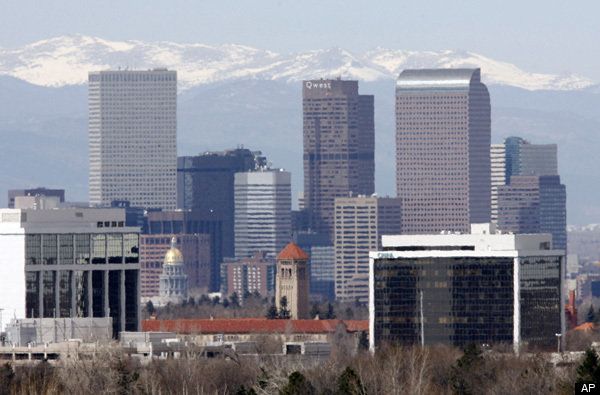
Sustainability could become the first megatrend of our new century. Cleantech is attracting more venture capital than software or biotech. Mainstream electric cars, big brand biodegradable household cleaners, socially conscious banks ... everywhere you look, green is moving from the outskirts to downtown.
But exactly how sustainable is downtown?
Cities are the primary habitat for most of humanity. And they pack a terrific carbon punch. Unfortunately, they're also extremely complex -- a tangled web of logistics, interconnected systems and decision-making silos. Making them more sustainable is, to put it mildly, a very difficult job.
That said, mayors have taken up the task with zeal. An initiative to green North American and European cities was launched by Seattle mayor Greg Nickels in 2005. Today, over 950 mayors have signed on, agreeing to do things like raise their building standards, improve energy efficiency, and recycle. More significantly, some have agreed to measure their progress and hold themselves accountable.
Is 'sustainable' enough?
Sustainability could be regarded as a zero sum game. We want to ensure that our actions have little, or no impact on our environment.
While this is a wonderful (and still distant) goal, I believe cities are capable of much more. Perhaps it's time we reframe our thinking, and aim higher.
Imagine building cities that create abundance. They would include buildings that generate enough energy to not only power themselves, but pump energy back into the grid. Businesses that regenerate local wealth. Social enterprises that regenerate the social capital of our communities. In other words, interwoven systems that, by virtue of their design, are capable of creating what we need -- and more.
The truth is, this isn't terribly far-fetched or utopian. Elements of it already exist.
Structures like the Bank of America tower in Manhattan are proof that self-sufficient buildings are not far off. The tower generates 65% of its own energy using renewable onsite sources, and captures much of its own graywater.
'Next Generation' communities like Dockside Green, meanwhile, bring regeneration home. They treat their own sewage, with capacity to clean the waste of adjacent communities. The residences use 45-55% less energy, and 65% less potable water.
Dockside Green also incorporates social elements that build a stronger, more diverse community. By incorporating affordable housing, it creates a non-homogeneous populace. Multi-use zoning, meanwhile, creates more pedestrian traffic. And a vigorous stakeholder engagement program builds a strong sense of belonging and self-reliance.
On the subject of self-reliance, locally grown food is an important element of regenerative cities. Urban agriculture, a tenet of the popular New Urbanism movement, seems an unrealistic goal - unless one considers new techniques in development, like vertical farming. Meanwhile, initiatives like Vancouver's 'Backyard Chicken' policy indicate a shift in attitude toward 'working' yards that can regenerate the food supply off the supermarket 'grid'.
Putting it all together
While the elements of a regenerative city may exist, a true regenerative city does not. The hurdle here is communication and coordination.
Organizations like Sustainable Cities are tackling this challenge by innovating new ways for cities to communicate their progress, share best practices, and brainstorm. The organization's PLUS network connects more than 40 cities around the world through exchanges and events.
According to Sustainable Cities' Patricia Gordon, the steps in building the regenerative city are similar to the steps in creating any higher-functioning organization:
•Establish and share an ambitious vision
•Create a collaborative, multi-discipline team that is both responsible for realizing the vision, and enabled with the tools and authority to carry out the work
•Grow and learn by sharing within your organization, and with other cities on the same journey
•Celebrate success
The final takeaway
Perhaps the most important takeaway for innovators is simply to not settle for sustainable.
While we have yet to achieve sustainability, its 'zero sum' thinking limits our creativity, and our ability to inspire stakeholders.
Instead, we should stretch our heads and aim for more. Regenerative cities may seem like the stuff of science fiction today. But that's what they said about putting a man on the moon.